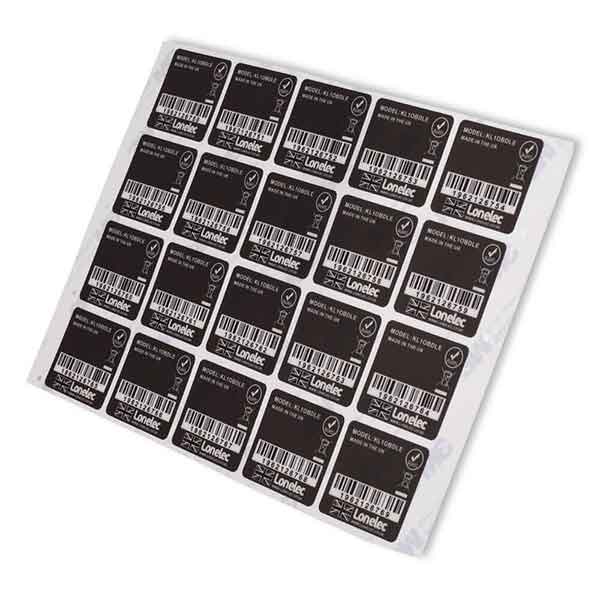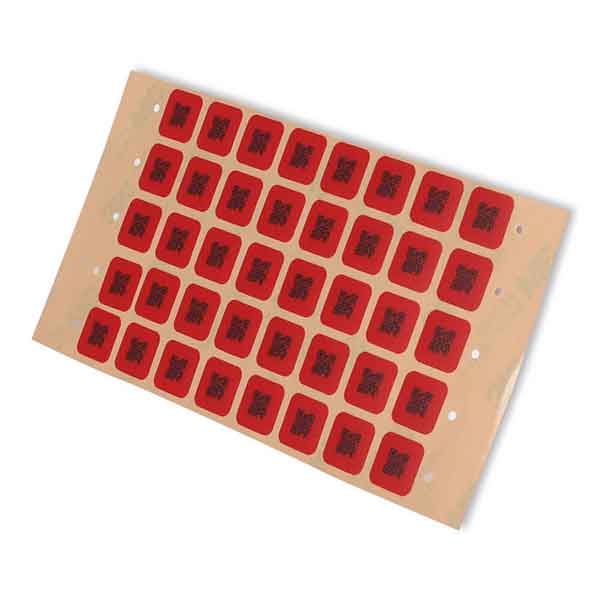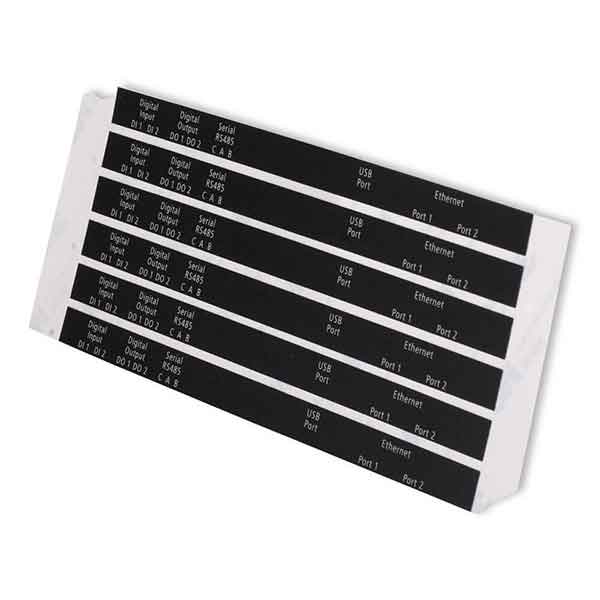Our label or overlay can print with unique barcode or QR code, This enables branding and product identification on a single label, and this label made of PET or Polycarbonate(PC) ,It can withstand extreme weather conditions, such as water, dust, and oil, which is not possible with ordinary paper labels.
- 100% new material
- Clear Windows or cut out die parts
- High-quality printing with cut-out parts and adhesive
- Precision die-cut service with smooth edges as design and good transparency
- Design, printing, die cutting services in one
- No MOQ, no mold tooling extra charge fee


